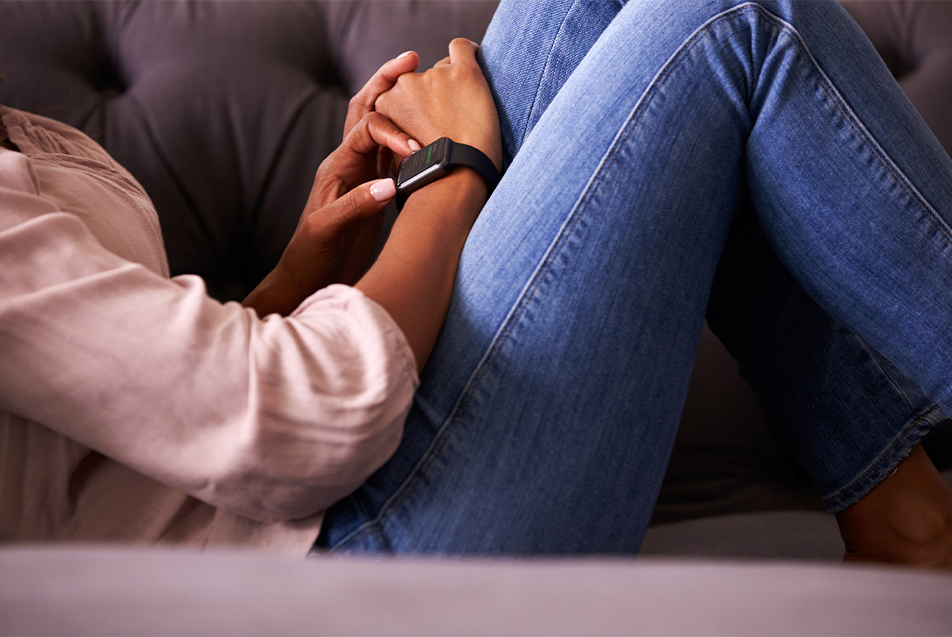
Wearables are becoming a mainstay accessory in the public wardrobe. More and more, people are starting to rely on the technology, and the personalized data it provides. Some may even find it detects cardiac abnormalities. We turned to Jonathan Shirazi, MD, PPG – Cardiology, for more on the intel we’re receiving from fitness bands, smartwatches and smartphones.
Like anything, having access to so much information, and certainly reading too much into any information, can lead to trouble. People can develop an anxiety over things they can measure. It’s important to absorb this data in moderation and try not to overthink it. That being said, there are certainly some benefits to this technology.
How wearables work
Most wearables can detect a heart rate in one of two different ways. The most common way is through photoplethysmography a technology that uses a light sensor to detect changes in blood volume that can then be inferred as a heart rate. Does their blood change in an even amount every time? How frequently does the blood volume shift back and forth? This is the technology found in most Fitbit® and Garmin® models and early generation Apple Watches®.
Another means of determining the heart rate would be using what health care machines use, monitoring the heart’s electrical activity to obtain a heart rate, and in new generations of wearables, even provide insight into the heart rhythm. Because it’s using the actual heart rate, it tends to be more reliable for determining the heart’s rate, and rhythm. This is the technology used by the latest generation Apple Watch and AliveCor® wearables.
Consumers must keep in mind that sensor errors, the position of the device and other variables, can alter the accuracy of wearables.
Wearables for wellness
I think of wearables as a tool for wellness in two ways. The benefit for the majority of people is the use of a wearable as a fitness tracker – a device that, through the use of an accelerometer, can count steps and determine overall heart rate. Even with some inaccuracies, these devices still offer a general sense of baseline activity and baseline heart rate. This application is good for anyone trying to improve their health. If you want to increase your activity, you need more steps or a higher heart rate. The American Heart Association and the American College of Cardiology recommend that adults should aim for 150 minutes of moderate aerobic activity each week.
As for the goal of 10,000 steps a day, that’s not necessarily the objective for all. For most, the goal is to increase activity. So if you take, on average, 8,000 steps a day, and increase that to 10,000 steps a day, you would see improvements. Once you know your baseline, you can set your own activity goal.
The second use is as an indicator of, not just heart rate and pulse, but the actual heart rhythm. Some newer wearables can tell if an individual’s heart rhythm is abnormal, whether abnormally slow or abnormally fast, this can be a useful tool for some patients who are struggling with feeling dizzy or light-headed, experiencing palpitations, erratic heartbeats, shortness of breath, etc., and those who suspect or are monitoring conditions such as atrial fibrillation (AFib), atrial flutter or supraventricular tachycardia (SVT).
Individuals can look back through tracing data and see frequency and duration of instances. This could be a red flag and signal a provider to order an EKG or further evaluation.
Benefits of wearables
These devices certainly aren’t 100% accurate, but I’ve seen a lot of patients benefit from wearables. They clue people into issues earlier and offer an opportunity for continual, long-term monitoring. They are certainly not a replacement for clinically proven monitoring devices physicians use to detect abnormalities, but they can be a useful weapon in the arsenal for information gathering.
The Apple Heart Study was recently presented at the national American College of Cardiology conference. People who wore an Apple Watch downloaded an app and were invited to enroll in a trial. The app would trigger the device to check the individual’s heart rate several times a day. If the pulse was irregular 5 out of 6 times, they would receive an alert to contact one of the studies’ providers. Out of more than 400,000 participants, 2161 (0.5%) received an alert. When evaluating the results of those who were alerted and got their rhythm checked, the Apple Watch had a positive predictive value 84% of the time when using 5/6 heart rate checks. It was accurate 71% of the time if the participant used 1/6 checks. Again, while it’s not a replacement for an EKG or office visit, it’s a great tool to have monitoring in the background.
When to see a doctor
First and foremost, the way you feel is always the trump card. It’s the most important thing. If you feel like something is wrong or you’re experiencing symptoms, you need to consult a physician. Just because a wearable says everything is normal, doesn’t mean there aren’t other issues it’s not detecting.
Based on the output you’re receiving from your wearable, consult a physician if you notice any irregular rhythm, or if your heart rate is abnormally elevated when not exercising. Additionally, if the heart rate is abnormally low during activity, that may warrant an evaluation as well if you are experiencing symptoms of fatigue, dizziness, lightheadedness, of shortness of breath.
For patients who have palpitations, newer wearables that can detect and record the heart’s conduction system during those palpitations can be very informative. However, one downside of this smart technology is that, by the time the patient experiences symptoms and activates their device to start recording, they may have missed the onset of the arrhythmia. There is a lot of valuable information in the beginning of the event. That’s why a tool like a Holter monitor can be so beneficial. Talk to your doctor about the appropriate evaluation of your symptoms and trust your instincts.



